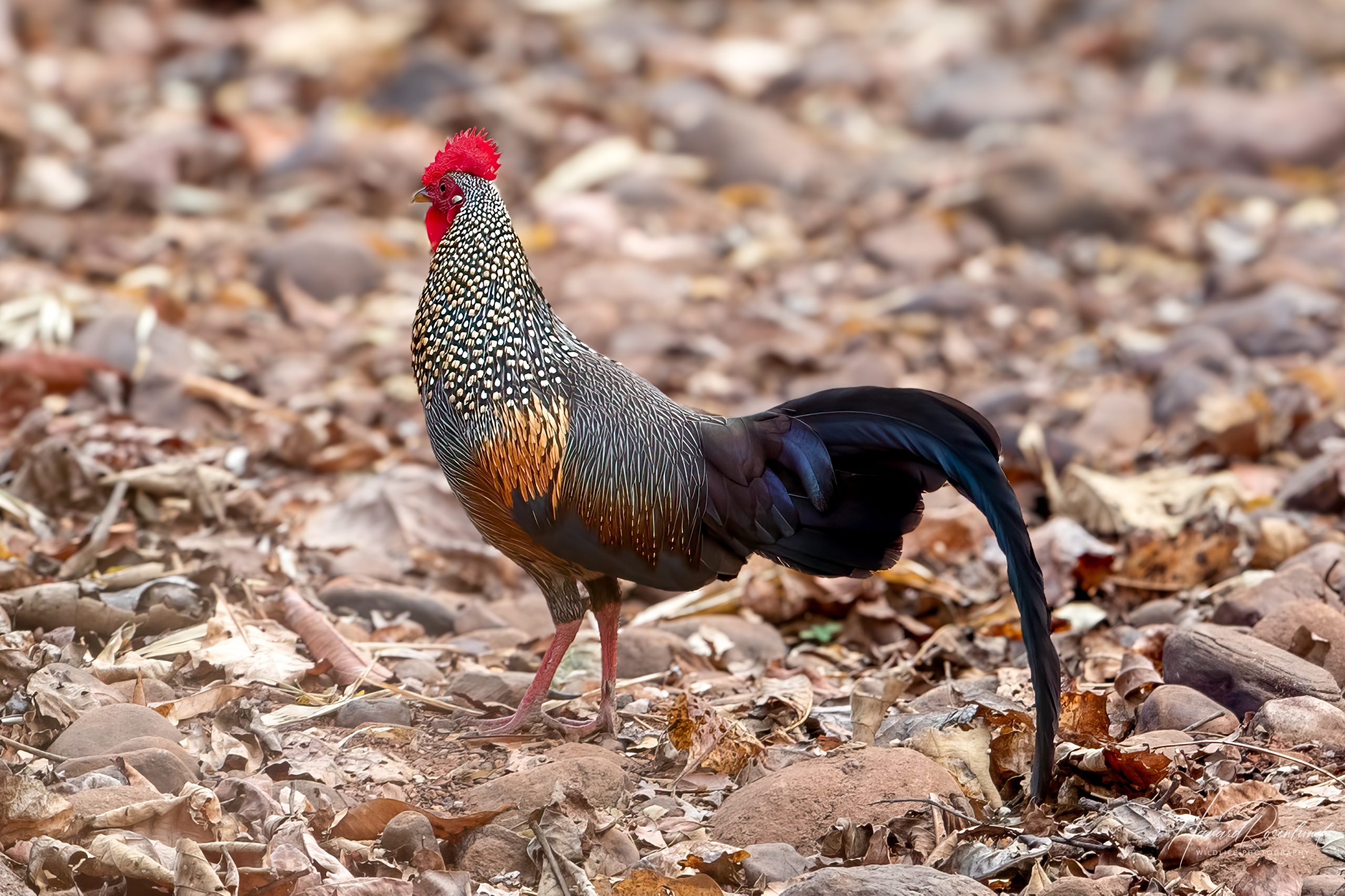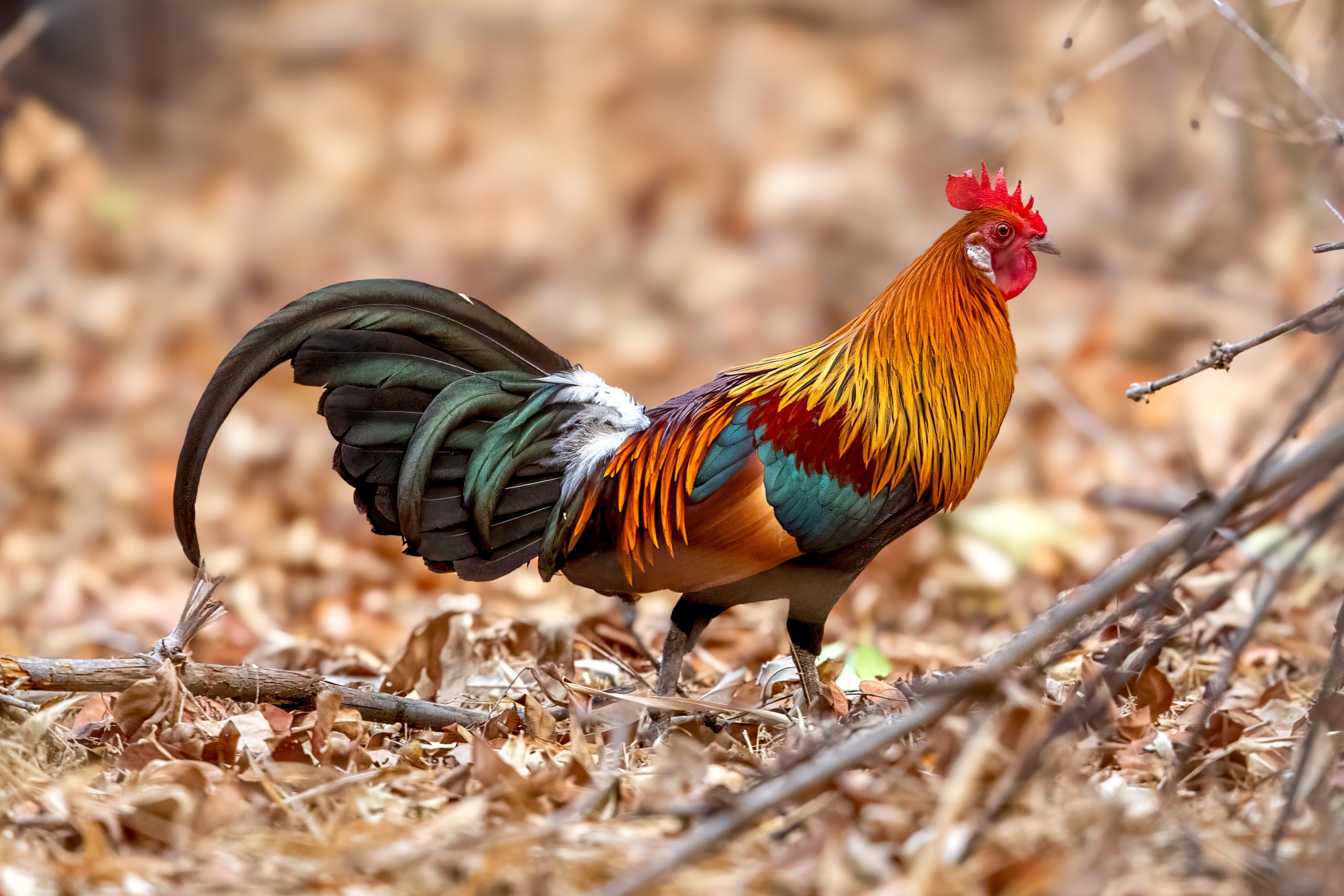Description
The grey junglefowl (Gallus sonneratii) is a species of bird endemic to the forests of India. It is particularly prominent in the dense forests of the Western Ghats and certain parts of the Eastern Ghats. Male grey junglefowl can reach up to 80 cm (31 in) in length, while females are typically smaller, measuring around 38-43 cm (15-17 in). The male exhibits striking plumage with a combination of grey and black feathers, adorned with intricate gold and white patterns. One of its distinguishing features is the elongated tail feathers that are glossy bluish-black. In contrast, the female is more subdued in coloration, exhibiting a predominantly brown plumage with black and white streaked underparts, which provides effective camouflage.
A key differentiator from the red junglefowl (Gallus gallus), the ancestor of domestic chickens, is the grey junglefowl’s distinct greyish plumage compared to the more vivid red and gold colors of the red junglefowl. The two species is known to hybridize in the wild, which can result in birds with mixed characteristics.
Diet & habitat
The grey junglefowl inhabits a variety of forested environments, ranging from moist deciduous forests to dry scrublands. They are also known to venture into agricultural areas adjacent to forests. This species is an omnivore, feeding on a diverse diet that includes seeds, grains, fruits, and insects. They forage on the forest floor, scratching at the leaf litter to uncover food. Their diet can vary seasonally based on food availability, and they are particularly fond of bamboo seeds when available.
Nesting
Breeding season for the grey junglefowl typically occurs from February to May, although this can vary slightly with regional climates. Males are polygynous and will mate with multiple females. During courtship, the males perform elaborate displays to attract females, including loud calls and physical displays of their vibrant plumage.
Females build nests on the ground, often concealed under thick vegetation. The nest is a simple scrape in the ground lined with leaves and feathers. A clutch usually consists of 4 to 6 eggs, which the female incubates for about 21 days. Once hatched, the chicks are precocial, meaning they are relatively mature and mobile from birth. They leave the nest shortly after hatching and follow their mother, learning to forage almost immediately.
Status
The grey junglefowl is currently classified as least concern on the IUCN Red List. However, it faces threats from habitat destruction due to deforestation and agricultural expansion. Hunting for its meat and feathers also poses a significant threat in some areas. Despite these challenges, the species maintains a stable population in many parts of its range due to its adaptability to different habitats.





